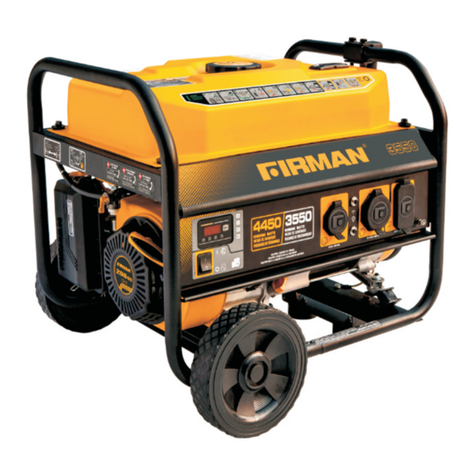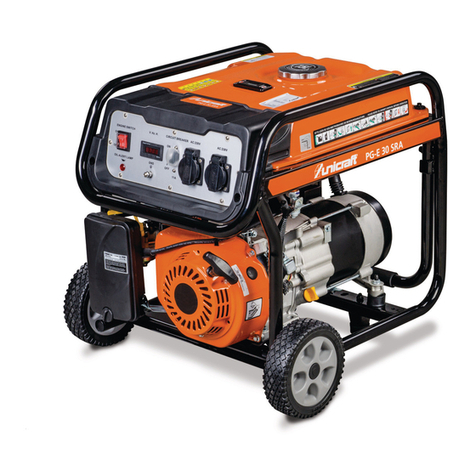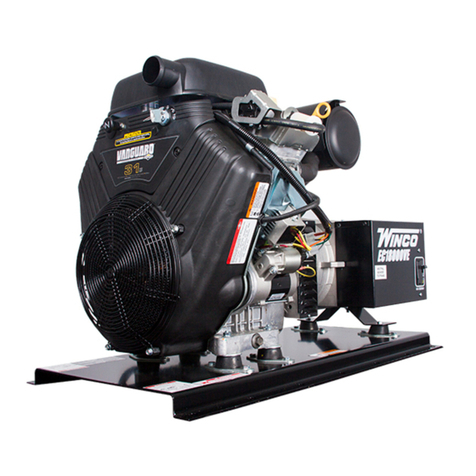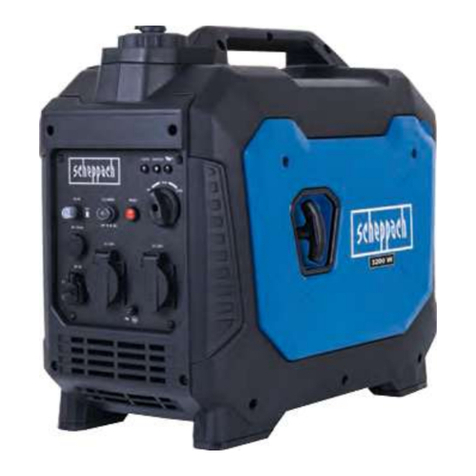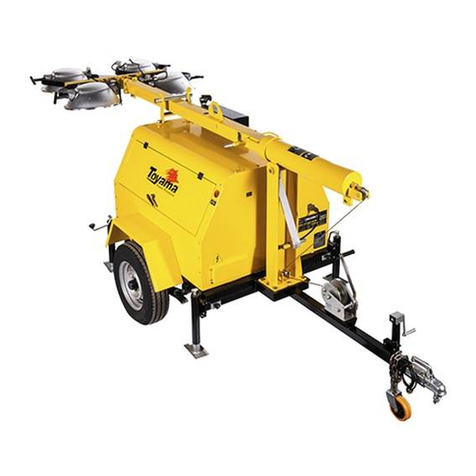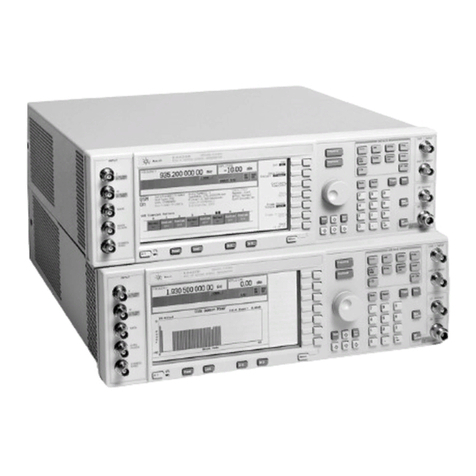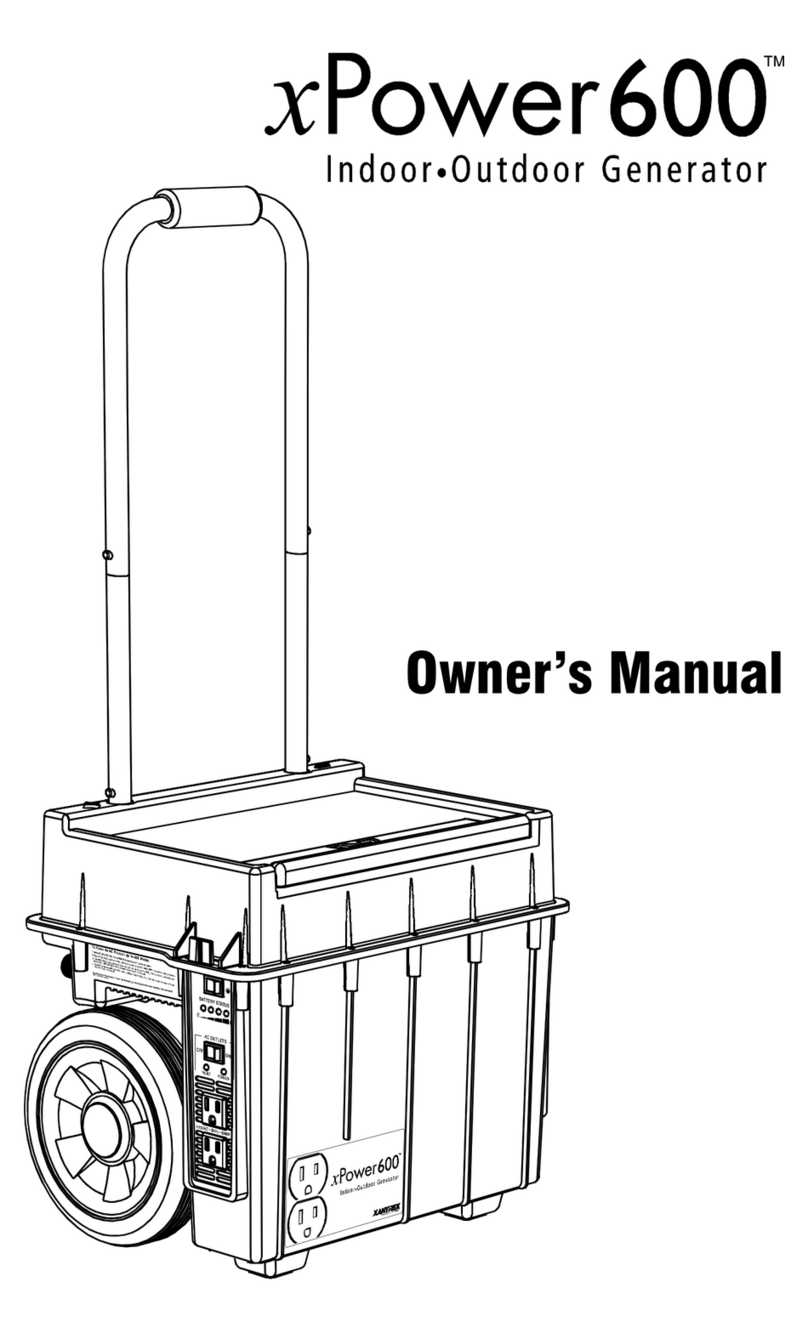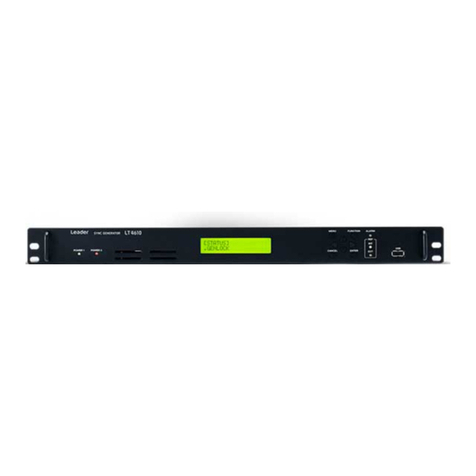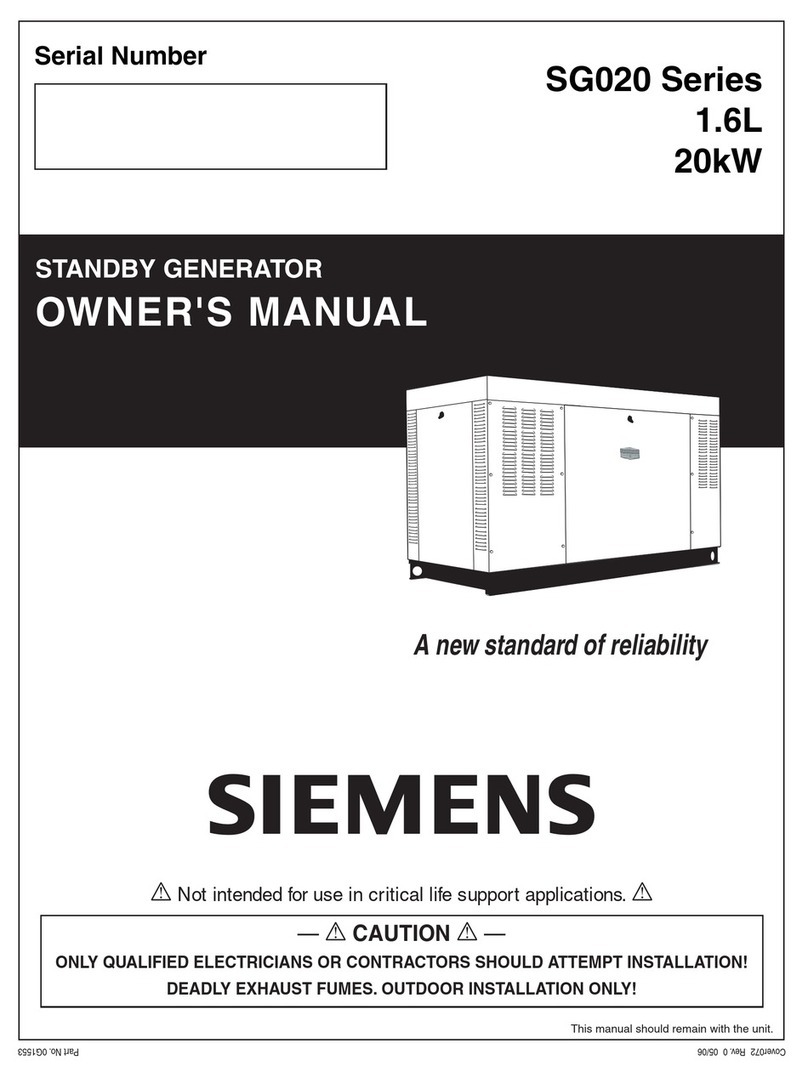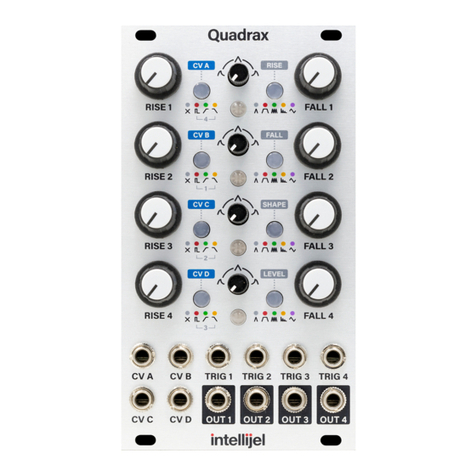feedback SFG611 User manual

~
~
m
D
w
w
IL
•

I
I
I
I
I
I
I
I
I • FEEDBACK INSTRUMENTS
LIMITED
Telephone: Crowborough (089 26) 3322
Manual
611
EdC
0484
12MHz
Sweep
Function Generator SFG611
12MHz
SWEEP
FUNCTION GENERATOR SFG611
Contents
Section 1 Description and Specification
Section 2 Operation
Section 3
Circuit
Description
Section 4 Maintenance
CROWBOROUGH SUSSEX
Cables: Feedback Crowbr Telex ENGLAND
Telex:
95255
Printed in England
by
Fl
Ltd,
Crowborough
3

Feedback
Instruments
Limited
Component replacement
Although
this Feedback manual
was
believed
to
be
correct at
the
time
of
printing,
components supplied may
differ
slightly
from
those described.
We
endeavour
to
improve
our
equipment
continually
by
incorporating
the
latest developments and components,
even
up
to
the
time
of
despatch.
if
it
is
practicabie we
include such new
or
revised
information
in
the
manual.
Whenever possible, replacement components should be
similar
to
those originally supplied. These may
be
ordered
direct
from
Feedback Instruments
Limited
or
its agents
by
quoting
the
following
information:
1.
Equipment
type
2.
Equipment
serial number
3.
Component reference
4. Component value
Standard components
can
often
be
replaced
by
alterna-
tives available locally.
COPYRIGHT
NOTICE
@Feedback
Instruments
Limited
1982
All
rights reserved.
No
part
of
this
publication
may be
reproduced, stored in a retrieval system,
or
transmitted,
in any
form
or
by
any means, electronic, mechanical,
photocopying,
recording
or
otherwise,
without
the
prior
permission
of
Feedback Instruments
Limited.
4
The Health
and
Safety at Work Act
1974
We
are
required under the Health and Safety at
Work
Act
1974,
to
make available
to
users
of
this equipment
certain
information
regarding its
safe
use.
The equipment,
'vvhen
used
in normal
or
prescribed
applications
within
the
parameters set
for
its mechanical
and electrical performance, should
not
cause
any danger
or
hazard
to
health
and
safety
if
normal engineering
practices
are
observed and
they
are
used
in accordance
with
the instructions supplied.
If,
in specific
cases,
circumstances exist in which a
potential hazard may
be
brought about
by
careless
or
improper
use,
these
will
be
pointed
out
and
the
necessary
precautiqns emphasized.
While we
attempt
to
give the fullest possible user
inform-
ation in
our
handbooks,
if
there
is
any
doubt
whatsoever
about any aspect relating
to
the proper
use
of
this equip-
ment
the
user should contact the Product Safety
Officer
at Feedback Instruments
Limited,
Crowborough.
I,
I
I
I
II
,f
I
I
I
I

I
I
I
I
,I
1
I
I
I
DESCRIPTION AND SPECIFICATION
Introduction
The 12MHz
Sweep
Function Generator SFG611
is
a
high-performance instrument offering versatile facilities
which simplify many test measurements in the 0.01 Hz
to
12M
Hz
frequency
range.
The push-putton selected waveforms, sine, square
or
triangular,
are
available at levels up
to
1
OV
pk-pk open
circuit from
50ft
The continuous amplitude control,
in conjunction
with
two
fixed attenuators
of
x0.1 each,
give
a suitable
range
of
output
level control. The d.c
offset
facility
gives
a unipolar capability
with
all com-
12MHz
Sweep
Function
Generator SFG611
SECTION 1
binations
of
signal
and
offset free
of
clipping.
Auxiliary
outputs provide a triangular waveform
and
a
TTL-
compatible square waveform capable
of
driving
two
standard
TTL
loads.
The frequency
range
is
selected
by
six push-buttons in
decade
ranges
together
with
a (Hz/1 000) switch,
applicable
to
all
ranges.
The mark/space ratio
of
all the waveforms
can
be
varied
by a continuous control in conjunction
with
three
switch positions.
Fig
1.1
5

Feedback
Instruments
Limited
The comprehensive sweep facilities can
be
used
in either
logarithmic
or
linear mode, covering the need
for
overall
frequency response
or
particular narrow-band measure-
ments
on
465kHz
or
10.7MHz
IF
circuits,
for
example.
Internal
or
external sweep
(VCF)
can
be
selected
by
means
of
a slide switch. The internal sweep generator
is
continuously
adjustable
from
50Hz
to
0.001
Hz
by
means
of
a single logarithmic
control.
A triangular
frequency sweep enables
both
directions
of
the sweep
to
be displayed, and
an
associated auxiliary
output
is
provided
for
driving the oscilloscope timebase. Also
incorporated
is
a 'single-shot' sweep
facility,
enabling the
SFG611
to
be
used
with
X-Y
recorders, a
TTL
square
wave
output
then operates
as
a pen
lift
control.
An
effective bright-trace marker gives high-resolution
calibration
of
response features
for
use
with
an
external
frequency meter.
6
Mechanical
The SFG611
is
housed in
an
ABS plastic
case
made in
two
halves
each
secured by
two
screws on
each
side.
The
case
provides the main structural strength
of
the
instrument. Removal
of
the
case
gives
access
to
all
components.
Without
the cover the SFG611 consists
of
a horizontal
PWB
fixed
by
small plastic brackets
to
the
front
and rear panels, providing a structure strong
enough
for
normal handling and maintenance. The
low
power dissipation
of
the SFG611 obviates the need
for
ventilation
holes.
All
controls
are
situated on the
front
panel, fig 1.1.
I
I
I
I
I
~
I
I
I
I

I
I
I
I
I
I
I
I
I
Specification
Frequency
Range
0.01
Hz
to
10M
Hz.
Selected
by
six pushbuttons in
decade
ranges
from
10
to
10M, plus (Hz/1000) switch
position applicable
to
all
ranges.
Range
Overlap
Frequency dial calibrated nominally 1
to
10,
with
over-
range from 0.2
to
12
Main
Output
Waveforms
Sine, Square, Triangular,
with
pushbutton selection
Source Impedance
son
Amplitude
1
OV
pk-pk maximum open circuit
Amplitude
Control
Single continuous control calibrated 0
to
1
OV
pk-pk (at
nominal 1V pk-pk intervals)
Stepped
Attenuator
Two
fixed attenuators selectable x0.1
each
12MHz
Sweep
Function
Generator SFG611
Offset
Adjustable fro,n
-5V
through 0
to
+5V giving unipolar
signal capability.
All
combinations
of
signal and offset
are free
of
~lipping.
Offset
not
subject
to
continuous
output
amplitude control
Termination
BNC socket
Mark/Space
Control
Affects all waveforms from main and auxiliary outputs.
Continuous control operational in threeswitch positions:
a)
fixed mark, variable
space,
continuously variable
from
1
:1
to
1:19
b)
Continuously adjustable mark
space
ratio
from
19:1
to
1:19, at a fixed frequency
of
approximately x0.1
main frequency setting.
c)
variable mark, fixed
space,
continuously variable
from
1
:1
to
19:1
7

Feedback Instruments
Limited
Sweep Facility
Control
Slide switch enables internal
or
external sweep (VCF)
to
be selected
External
Gives normal unswept operation,
but
a voltage applied
to
the
'VCF'
socket modifies the frequency
of
operation
as
follows:
Linear mode: Voltage applied
to
the VCF
input
in-
creases
frequency at
the
rate
of
about
+0.3V
per 1 major
scaledivison (negative voltages decrease frequency).
Logarithmic mode: Voltage applied
to
the VCF
input
decreases
frequency at
the
rate
of
about 5V per factor
of
10.
Internal
Provides a triangular waveform
from
the socket
'TB
out
/''
and a corresponding square waveform
from
the
'TB
out
U ' socket. Sweep frequency rate adjustable
by
sinQie
logarithmic
control
from
50Hz
to
0.001 Hz.
Triangle amplitude:
5V
pk-pk
(OV
to
+5V)
from
1
k.O.
Square waveform
TTL:
(OV
to
+5V)
to
drive
two
standard loads available
from
'TB
out
U
'.
Operating Modes
Lever switch
'run/S-S/trig'
gives
continuous operation
in
'run'
position. When moved
from
'run'
to
'S-S'
(single shot) the triangle
output
goes
to
zero
and
then
executes a half cycle
(OV
to
+5V) when the switch
is
moved
to
the
'trig'
position. When operated in the
'S-S'
8
condition
the
'TB
out
lf
· may
be
used
as
a 'pen
lift'
control
for
X-Y
recorders. The 'set
max-min'
spring
return lever switch over-rides the sweep triangle generator
to
hold the waveform at its maximum (5V)
or
minimum
(OV) excursion. In the run condition this maximum
or
minimum
is
held
only
during the operation
of
the
'set
max-min'
switch.
In
'single-shot' the conditon
of
maximum
or
minimum
is
held until some other con-
dition
is
initiated.
Frequency Marker
An effective bright-up marker
for
use
with
oscilloscope
displays
of
frequency
responses
is
available
as
ahesitation
in
the
sweep triangle voltage. The position
of
this
is
controlled
by
a 'marker' control. The triangular voltage
and frequency at which this occurs
can
be
held
by
an
associated 'marker' pushbutton.
Sweep Width
This control
gives
the
proportion
of
the sweep triangle
voltage
used
to
control the frequency
of
the internal
sweep generator. The
scale
is
calibrated
from
0%
to
80%
for
linear sweep,
and
from
0
to
3
decades
for
logarithmic
sweep. In both conditions
('lin'
and
'log') the maximum
frequency
is
set
by
the main dial
and
occurs when the
triangle
output
voltage from
'TB'
is
maximum (+5V).
The calibration on the
sweep
width
control indicates the
sweep
width
as
a
proportion
of
the main frequency
setting.
e.g.
linear mode, main dial 50kHz, sweep-width
80%,
gives
sweep
from
10kHz
to
50kHz, sweep-width
two
decades,
gives
sweep from 500Hz
to
50kHz.
I
I
I
I
I
I
I
I
I
I

I
I
I
I
I
I
I
I
I
Auxiliary
Outputs
TTL
Square
wave
Amplitude
TTL
compatible (nominal 0
to
+5V)
Rise time
<50ns
unloaded
or
(50+4.4C)
ns
with
CpF added capacitance
Sink capacity
Two
standard
TTL
loads
Termination BNC
Triangular
wave
Amplitude 1V pk-pk
Impedance
50S1
Termination BNC
Power
Requirements
Line voltage
110/220/240V,
50
or
60Hz, selected
by
external slide.
Consumption
25VA
Fuse
31-5mA slow
blow
(20mm x 5mm)
12MHz
Sweep
Function
Generator
SFG611
Dimensions
and
Weight
Width
Height
(with
feet)
Depth
Weight
300mm (12in)
115mm (4.5in)
226mm (9in)
2.7kg
(61b)
9

..,
0 11)
11)
a.
a-
Q)
n
"
~
c
3
11)
~
r
3"
;::;·
CD
a.
--- - ------

I
I
I
I
I
I
I
I
I
OPERATION
Installation
of
SFG611
The
function
generator
is
packed
in inserts
of
expanded
polystyrene
to
prevent
damage
in
transit.
On
opening
the
end
of
the
corrugated
cardboard
container
the
inserts
together
with
the
SFG611
should
be
withdrawn
smoothly
from
the
container.
Take
care
that
the
inserts
and
SFG611
are held
together
during
this
time.
Inspect
the
SFG611
and
if
any
damage
is
evident
immediately
notify
the
carriers.
Voltage selection
Ensure
that
the
instrument
is
set for
the
appropriate
supply
voltage
by
inspecting
the
voltage
selector
on
the
back
panel. Reset if necessary
before
connecting
to
the
supply.
Wire
connections
The
colour
code
of
the
power
supply
cable is:
Brown
Blue
Green/Yellow
Live
Neutral
Ground
The
ground
wire
is
connected
to
the
front
and
back
panels
of
the
SFG611
and
to
the
terminal
marked
'
on
the
front
panel.
Preliminary settings
Users
unfamiliar
with
the
instrument
are
recommended
to
set
the
controls
as follows
before
reading
further,
if
they
wish
to
try
out
the
controls
as
they
are
described.
12MHz
Sweep
Function
Generator SFG611
SECTION 2
This
procedure
may
also be helpful
at
any
time
that
a
fresh
activity
is
to
be
started.
Set:
'marker
position'
off
(anti-clockwise
to
operate
switch)
'run-s/s-trig'
switch
to
'run'
sweep
switch
to
ext
'log-lin'
to
'lin'*
attenuator
buttons
out
'offset'
to
central
position
(zero
offset)
'output
volts'
to
a
convenient
value
for
observation
*
Note
It
is
recommended
that
the
SFG611
is
always
operated
in
the
'lin'
mode,
unless log sweeping
is
required,
as
this
is
the
mode
that
gives
minimum
drift
and
the
most
accurate
frequency
calibration.
Frequency selection
If a
frequency
below
1OHz
is
required,
move
the
'log-lin'
switch
to
the
'Hz/1
000'
position.
For
frequencies
above
10Hz
select
'lin'
or
'log'.
(Other
possibilities will
become
apparent
in
later
paragraphs).
Press
the
frequency
range
selector
pushbutton
whose
adjacent
markings
span
the
desired
frequency
(in Hz
or
mHz
as
the
case
may
be). Finally
set
the
'Frequency'
dial
to
obtain
that
particular
frequency
in
the
range.
11

Note
that
each actuai range
extends
somewhat
above
and
below
the
nominal
range indicated
by
the
switch
markings.
Thus
for a
frequency
of
5Hz
the
'log-lin'
switch
would
be
set
to
'Hz/1
000',
the
required
range
button
would
be
'1
K-10K'
and
the
'Frequency'
dial
would
be
set
to
5.
Note
that
the
frequency
calibration
is
altered
when
the
'mark/space'
facility
is
in
use
(bracketed
positions
of
the
log-
I
in
switch;
see
'Mark/Space
ratio
control',
Outputs
Main
output
One
of
the
three
waveform
selector
buttons
should
be
depressed
to
select a triangle,
sine
or
square
wave
as
required.
The
selected
waveform
will
then
appear
at
the
output
socket
with
an
amplitude
which
may
be
set
by
the
'output
volts
pk-pk'
dial,
whose
calibration
should
be
correct
when
neither
of
the
attenuator
buttons
is
depressed,
and
no
load
is
connected
to
the
output
socket.
This
output
waveform
may
be raised
or
lowered
5V
in
d.c level
by
turning
the
'offset'
control.
Thus
if
the
amplitude
is
set
to
say 6V pk-pk (±3V pk), and +4V
of
offset
are
applied,
the
resulting signal will oscillate
between
+1
V
and
+7V. It
is
always possible
to
set
every
part
of
a
waveform
to
be
of
the
same
polarity
in
this
way,
and no
combination
of
adjustments
will cause
clipping
of
the
combined
(alternating
plus
offset)
output.
The
combined
waveform
with
offset
is
connected
to
the
output
socket
effectively
in
series
with
a
50-ohm
source
impedance,
either
directly,
or
through
either
or
both
of
12
the
attenuators
introduced
when
the
'X0.1'
buttons
ara
depressed.
Each
button
introduces
20d8
(X0.1
in
voltage)
attenuation,
leaving
the
output
impedance
unchanged.
Auxiliary
outputs
Two
auxiliary
outputs
are provided which are
synchron-
ous
with
the
main
outputs.
Their
relative phases are
indicated
in
fig
2.1.
Their
amplitudes
and levels are
unaffected
by
the
main
output
controls.
The
auxiliary
square
wave
output
can
be
used
to
drive
two
TTL
loads.
Alternatively,
if it
is
loaded
with
50
ohms,
it
produces
a fast
square
wave,
OV
to
0.6V
approximately.
QUX
(
Vpk-pk
outputs +
sv
I I
ov
_
__
_ I
ma1n
output
square
triangle
s·me
I I L
A 8 A
Fig 2.1
I
I
I
I
I
I
I
I
I
I

I
I
I
I
I
I
I
I
I
I
Mark/space ratio control
This
control
is
brought
into
operation
when
the
'log-lin'
switch
is
in
any
of
the
three
bracketed
positions
adjacent
to
the
control.
With
the
switch
turned
to
U,
i.e clockwise
one
step
from
'lin',
the
mark/space
control
affects
only
the
half-cycle
indicated
by
A in
fig
2.1,
slowing it
down
by
a
factor
which
may
be
adjusted
between
1 and
19
times
compared
·with
the
other
half-cycle,
whose
duration
is
unaffected.
Similarly
with
the
switch
two
positions
further
on
atn,
the
control
affects half-cycle
B.
With
the
switch
in
the
intermediate
position,
marked
Hz/1
0,
both
half-cycles are slowed
down.
The
relative
durations
can be
adjusted
by
the
rotary
control,
and
the
time
of
the
whole
cycle
is
increased
to
approximately
ten
times
that
indicated
by
the
frequency
calibration
(i.e
frequency
is
reduced
tenfold).
The
frequency
of
the
main
output
waveforms
can
be
altered from
the
calibrated value
by
the
application
of
a
control
voltage. This voltage
may
be derived
from
an
external
source
or
from an internal
sweep
oscillator,
selected
by
the
'ext-int'
switch
(below
the
sweep
rate
control).
If
'ext'
is
selected,
the
sweep
width,
sweep rate and
marker
controls
will have
no
effect.
A signal voltage
applied
to
the
VCF
socket
alters
the
frequency
as
follows:
12MHz
Sweep
Function
Generator SFG611
In all linear
modes
(lin,n,
Hz/10,U,
Hz/1
000)
a positive signal increases
the
frequency,
and
neg-
ative signal decreases it,
at
a rate
of
about
one
major
scale division
(one-tenth
the
nominal fre-
quency
range)
per
0.3V.
In
logarithmic
mode
a positive VCF signal decreases
the
frequency
and
a negative signal increases it
by
about
one
decade
(i.e
factor
of
10) per
5V.
In
neither
case
should
the
VCF
signal
take
a value
which
would
drive
the
frequency
outside
the
limits zero
and
20% above
the
nominal range set by
the
frequency
selector
switch.
13

Swept-frequency
operation
In
order
to
use
the
internal
sweep
oscillator,
set:
'log-lin'
to
either
'log'
or
'lin'
as
desired
'ext-int'
to
'int'
'run-S/S-trig'
to
'run'
With
these settings
the
sweep
oscillator
produces at
the
VCF(fB
socket a
triangular
waveform
which
always
sweeps between
OV
(for
minimum
frequency) and
+5V
(maximum
and
nominal
frequency),
irrespective
of
the
sweep
width
control
setting.
The
rates
of
rise and fall
are equal, and
the
sweep
frequency
is
adjustable over a
wide
range
by
the
'sweep rate'
control.
For
oscilloscope
(~
()~·
O
SfG
611
®o
V\
"-JIV\T
"\.1"
onn
on
o o
DOD
o o
DO
+5Vpk
manitor
displays
of
frequency
response
it
is
recommended
that
an
X-
Y oscilloscope
use
this
voltage
for
X-deflection,
fig
2.2.
The
'sweep
width'
control
selects a
portion
of
that
waveform
for
VCF,
thus altering the
extent
of
the
decrease in
frequency.
Meanwhile
the
adjacent socket
provides a square wave suitable
for
pen
lift
control
of
a recorder,
or
for
triggering
an
oscilloscope
if it
has
no
X-Y
facility.
The
'run-SIS-trig'
control
stops and starts
the
sweep
oscillator
as
follows.
In
the
'run'
condition
the sweep
oscillator
runs con-
tinuously.
XY
oscilloscope
RIR
'----.~.._._.._..,)
X
0
if
required
14
Fig
2.2
Signal connections
for
swept-frequency
operation
(
-!-
not
shown)
I
I
I
I
I
I
I
I
I
I

I
I
I
I
I
I
I
I
I
I
In
the
'S/S'
condition
the
sweep
signal goes
to
zero and
will remain
there
until a
new
sweep
is
started
by
moving
the
switch
against
the
spring bias
to
'trig'.
Each
time
a
sweep
is
triggered its
TTL
output
goes low while
the
frequency
increases;
during
the
return
half-cycle
of
the
sweep
oscillator
(frequency
decreasing)
the
TTL
output
goes high.
The
TTL
output
can
therefore
be
used
as
a
'pen
lift'
control
when
recording
frequency
responses.
12MHz
Sweep
Function
Generator SFG611
Frequency
setting
for
internally-swept
operation
using
the
calibrations
of
the
SFG611.
The
maximum
frequency
of
a
sweep
should
be
set
first.
It
is
simply
that
which
is
set
on
the
normal
frequency
controls.
The
minimum
frequency
is
that
frequency
multiplied
by
a
factor
(less
than
one)
which
is
determined
by
the
sweep
width
control.
This
may
be
shown
by
~imple
examples.
Example
1.
It
is
required to sweep from
300kHz
to
600kHz
to examine the response
of
a
465kHz
IF
transformer.
First
the
highest
frequency
is
set
by
pressing
the
range
selector
between
1
OOk
and 1M
and
setting
the
frequency
dial
to
6.
Assuming a linear
sweep
is
required,
the
lowest
frequency
is
500/o
of
the
highest.
So
'lin'
is
selected,
and
the
sweep
width
is
set
to
50%
(the
inner
scale).
In
this
case
the
maximum
sweep
rate
might
be
usable,
but
note
the
later
paragraph
on
distortion.
15

Feedback
Instruments
Limited
Example
2.
An
audio
circuit
is
to be tested between
20Hz
and 20kHz. A logarithmic display
of
response
is
required.
'Log'
condition
is
selected.
The
high-end
frequency
is
set
by
selecting range 1
Ok-1
OOk
and setting 2
on
the
frequency
dial.
The
lowest
frequency
is
3 decades lower
than
the
highest; sweep
width
is
therefore
set
to
3.
(More generally
the
number
of
decades
is
the
common
logarithm
of
frequency
ratio).
In
this
example
a
much
lower sweep rate will
be
re-
quired,
certainly well below
the
20Hz
bottom
frequency
of
the
sweep range.
In
setting
up
this display
the
oscilloscope's horizontal
sensitivity
may
conveniently
be adjusted so
that
the
trace
is
just
9cm
long.
The
display scale
is
then
3cm
per
decade,
the
graticule lines corresponding
to
frequencies
of
20,
43,
93,
200,
400Hz
etc.
For
many
practical
purposes
these
can be
taken
as
20,
40,
100,
200,
400Hz
etc,
see fig
2.3.
Frequency
checking
It will be
found
when a
swept-frequency
characteristic
is
being displayed
that
the
main
frequency
control
acts
in
a
manner
similar
to
an 'X
shift':
that
is
to
say
the
display can be moved laterally.
If
for
example it
is
required
to
find
out
the
centre
frequency
of
a
resonant
circuit-
fig 2.4(a)
-all
that
need be
done
is
to
turn
the
16
-
....
-
-
Oo#
~
(a)
-
-
....
-
-
...
I
... ... ...
...
....
a -
-
....
...
-
....
a
pprox
frequency,
Hz
Fig2.3
(b)
Fig 2.4
I
I
I
I
,I
I
I
I
I
I

I
I
I
I
I
I
I
I
I
I
main frequency
control
until
the
point
to
be
measured
is
at the right-hand
end
of
the
trace-
fig 2.4(b)
-and
then
to
read
off
the frequency
from
the frequency dial.
If
alternatively
it
is
desired
to
leave
the controls un-
disturbed the frequency
of
interest
can
be scaled
directly
if
the
sweep
is
linear. When
logarithmic
sweep
is
in
use
and the frequency ratio
is
at
all large the desired
frequency f may
be
calculated in terms
of
the end
frequencies f1, f2
by
applying the
following
formula
to
the
lengths I
and
m measured
from
the
oscilloscope face
(fig 2.5).
f =f1 e
mIn
(f
2
/fl)
f.1
f
fl
~
l
_J
~I
Fig2.5
12MHz
Sweep
Function
Generator SFG611
Using external frequency meter
Several controls
are
provided which greatly facilitate
frequency-response
work
when
used
in
conjunction
with
an
external frequency meter. The latter may con-
veniently
be
driven
from
the
auxiliary
TTL
output
near
the main
output
socket.
The end-frequencies
of
the sweep may be accurately set
using the 'set'
control.
If
the
'set'
control
is
moved
to
'max'
the
sweep oscillator
is
held in the
condition
giving
maximum
frequency;
similarly
'min'
gives the
minimum
frequency reached
during
a sweep.
To
adjust the end frequencies
of
a
sweep,
first
switch
to
'max'
and set the main frequency
controls; then switch
to
'min'
and adjust the sweep
width
until
the
desired
minimum
frequency
is
obtained.
While swept operation
is
in progress the frequency
meter
may
be
expected
to
read the average frequency.
Note
that
this
will
be
half the sum
of
the end frequencies
only
if
the sweep
is
linear. During
logarithmic
swept
operation
the
average frequency
is
f (av) =
fmax
-
f
In(~)
f .
mm
17

Feedback
Instruments
limited
Frequency marker
A
marker
is
provided
for
use
with
the
arrangement
of
fig
2.2.
The
marker
controls
are
inoperative
if
the
rotary
marker
control
is
set
to
'off'.
However as
this
control
is
rotated
away
from
the
off
position
the
marker
appears
as a
brightening
of
the
oscilloscope
trace.
It
may
be
posii:ioned
anywhere
across
the
screen.
(It
is
produced
by
causing
the
sweep
process
to
pause
momentarily,
and
therefore
alters
the
sweep
period slightly).
If a
feature
(e.g a resonance)
is
to
have its
frequency
measured,
the
marker
should
be
set
to
mark
the
feature
on
the
display. Pressing
the
marker
pushbutton
will
then
hold
the
frequency
of
the
oscillator
at
the
value
marked;
the
marked
frequency
can
then
be
read
directly
on
the
frequency
meter.
Display Distortion
\Nhen a
swept
frequency
is
used
to
examine
the
charac-
teristic
of
a
circuit
it
is
important
that
the
circuit
under
test
is
given long
enough
to
respond
properly
to
each
frequency.
This
means
that
the
frequency
must
be
swept
sufficiently
slowly. This
is
especially
true
of
resonant
circuits
where
there
is
an
exponential
build
up
of
amplitude
in response
to
the
sudden
application
of
a
resonant
signal as
shown
in
fig
2.6.
18
input
output
I
I
I
I
I
I
I
I
Fig2.6
I
I

I
I
I
I
I
I
I
I
I
I
From
this
familiar response it can be seen
that
the
average response
of
the
resonant
circuit
is
effectively
delayed
in
time
with
respect
to
the
stimulus.
This
sort
of
effect
occurs
when
the
stimulus
is
a
swept-frequency
signal;
the
main response
of
the
circuit
tends
to
occur
after
the
stimulus
is
past
so
that
the
response
is
displaced
(fig
2.7).
(a)
(b)
Fig 2.7
With a sweep
generator
employing
a
'blanked'
and/or
rapid
return
it
is
not
easy
to
tell
when
this
sort
of
distortion
is
occurring. With
the
SFG611
where
12MHz
Sweep
Function
Generator
SFG611
sweeping
occurs
in
both
directions,
the
response
when
sweeping
too
fast
appears
as
in
fig
2.8.
On
reducing
the
sweep
speed
the
two
traces
come
together
to
give a
true
display.
The
SFG611,
by
always providing
sweep
up
and
sweep
down
of
frequency,
gives a
continual
check
on
the
suitability
of
the
sweep
speed
chosen
and also gives
optimum
display
brilliance
through
the
absence
of
trace
blanking.
Further,
the
continuously
adjust-
able
sweep
rate
control
allows
optimum
repetitive
rate
consistent
with
minimal
distortion.
Fig 2.8
191

Feedback Instruments Limited
20
FEEDBACK
/~
OSFG611
0
0-t:;x
()
-u·
@ 0
0 t6
ODDDDD
¥
DOD
00
DD
monitor
r
f
a
-J....--
I
a
j
'-
...
~·:·
~
:·.~.:.:.:.:·~
·
..
:.:.:
·=
·=
·:
·.:
·:
.....
. . . .
...
...
...
...
...
XY
oscilloscope
tifJ
X
Fig2.9
......
.:.
positive X
f
/:.
-1display for
m
~oo~::t
spot
J
Fig 2.10
I
I
I
I
I
I
I
I
I
I

I
I
I
I
I
I
I
I
I
I
2.10
Phase
Measurement
Measurement
of
the
phase
shift
of
a signal in a
system
under
test
may
be
made
as in fig
2.9.
Usually a +ve
voltage
on
the
Y
and
X
inputs
of
the
oscilloscope
moves
the
spot
upwards
and
to
the
right
respectively.
This
may
I
:·:·:·1·:·:·:·
I
I
I
-
12MHz
Sweep
Function
Generator
SFG611
be
verified
by
short-circuiting
the
system
to
obtain
zero
phase
shift.
The
display
can
be arranged
symmetri-
cally
about
the
X axis as in fig
2.10,
i.e
a=a'.
To
simplify
calculations
it
is
convenient
to
adjust
the
X
deflection
to
be
nine
scale divisions as in fig
2.11.
/
..
.. . . . . .
Fig2.11
display
for
positive
X
moves
spot
to
left
21
Table of contents
Popular Portable Generator manuals by other brands
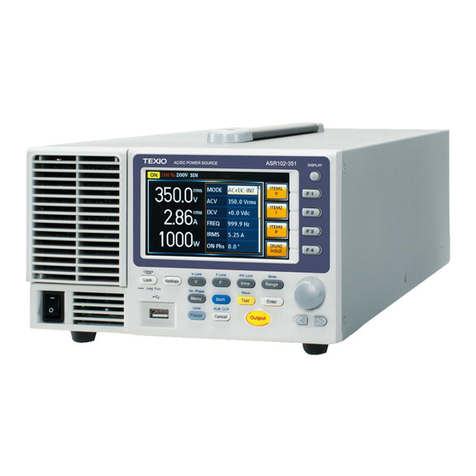
TEXIO
TEXIO ASR Series instruction manual
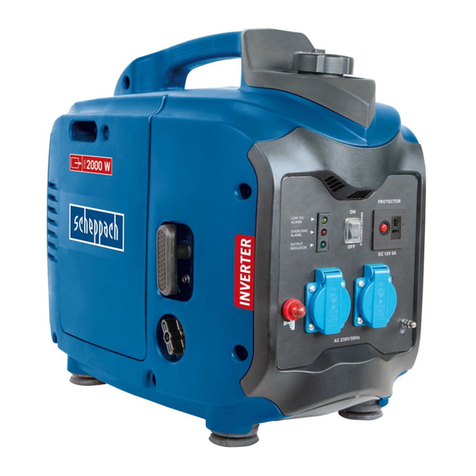
Scheppach
Scheppach SG2000 Translation from the original instruction manual

Quipall
Quipall 5250DF Operator's manual
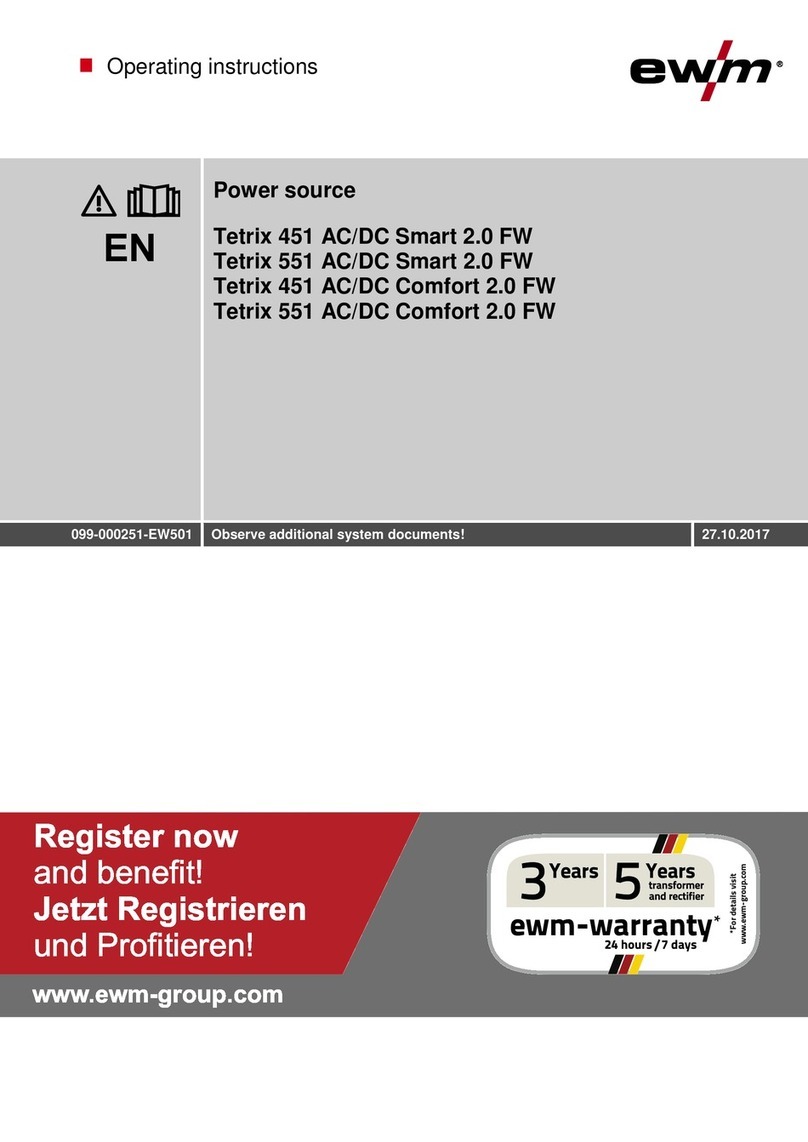
EWM
EWM Tetrix 451 AC/DC Smart 2.0 FW operating instructions

Humana
Humana Health Care Nano-Bubble Operation manual

Mosa
Mosa FPT GE 335 FSX Use and maintenance manual
